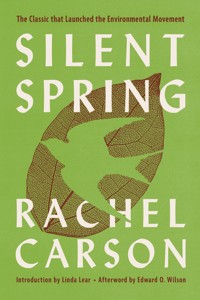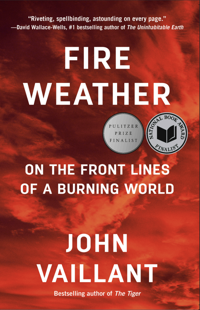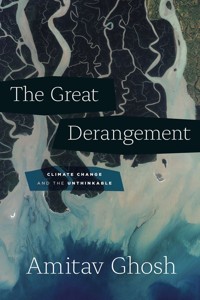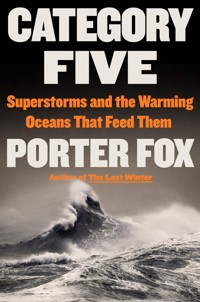Seven Books About How the Earth Is Changing Right Now
These visceral reported accounts will help readers better understand the new ecological status quo.

On a shelf next to my desk, I keep the books that shaped how I think about our planet—and how I cover it as a journalist focused on nature and the climate. When I sit down to write about the natural world, titles such as The End of Nature, by Bill McKibben; A Sand County Almanac, by Aldo Leopold; and The Solace of Open Spaces, by Gretel Ehrlich, accompany me. In the decades since they were published, I’ve returned to these touchstones again and again. Each one felt pivotal to my comprehension of the way humans affect our environment.
But lately, as I read news about deadly heat waves and disappearing glaciers, those titles are beginning to seem almost naive. They’re full of far-off warnings of what could come if we don’t curb emissions or cut back our rampaging use of resources. There is no if anymore. Our planet is record-breakingly hot because of a global failure to heed those admonitions. Fifty-five years after the first Earth Day was organized, long-term data about warming oceans and aridifying forests are paired, more and more, with impossible-to-ignore proof of civilization’s cascading effects: raging storms, endangered species, fire seasons that stretch all year long. We’re past prediction and into perception. Today, a new genre of writing—one that records the ongoing crisis—feels more useful than my old standbys. Below are seven visceral reported accounts of what’s happening in the places where the Earth is changing most rapidly; each will help readers better understand the new status quo.

Silent Spring, by Rachel Carson
This 63-year-old classic might seem to belong on the shelf with the other old-school books, but it’s worth returning to because Carson built the mold for reporting on an ongoing disaster. She made chemical pesticides, an otherwise dry subject, terrifying and compelling by outlining the ways that DDT, a highly toxic insecticide, was harming the natural world. By referencing the texture of paper-thin eggshells and the eerie silence of bird-free spring mornings, she pulled on all our senses in order to precisely pin down the damage. Then she untangled the chemistry of these dangerous compounds, connected their varied effects, and called out chemical companies and the U.S. military for their complicity in spreading them, giving readers context for what they saw happening in daily life. Carson’s report was revelatory in its time: It was used in congressional testimony that led to a ban on DDT, and it was cited during the formation of the Environmental Protection Agency. Today, it’s still remarkable for its clarity and punch, and reads like a blueprint for making sense of a rapidly changing ecosystem.

Fire Weather, by John Vaillant
Vaillant’s book covers a natural disaster that, he acknowledges, lacks subtlety: The 2016 Fort McMurray Fire, the most expensive natural disaster in Canadian history, scorched a community that was purpose-built to extract bitumen-rich oil sands. Fire Weather is a horror story in three dimensions. As Vaillant describes, instant by instant, the fire’s rampage—whole neighborhoods cut off by flames; houses vaporized in six minutes flat, everything burned but the cast-iron bathtubs—he also connects the resource extraction happening in places like Fort McMurray to the effects of climate change that are setting the stage for megafires, such as warming and aridification. As Vaillant explains, human choices continue to fuel burns on a macro level as well as on a micro level; part of the reason the Fort McMurray Fire was so destructive was that officials couldn’t believe it was going to be as bad as the forecasts suggested. They held off on evacuating for far too long. Vaillant identifies the problem: People struggle to imagine disasters out of scale with what they have seen in the past. To prepare for what’s coming, he warns, we’re all going to have to change our mindset.
[Read: Climate models can’t explain what’s happening to Earth]

Five Days at Memorial, by Sheri Fink
When Hurricane Katrina hit New Orleans, in 2005, the city was first slammed by brutal winds, then inundated by floodwaters as its levees failed. In the chaos, residents were forced to choose between terrible options. At Memorial Medical Center, in the city’s Uptown neighborhood, doctors and nurses had to decide how to care for and evacuate very sick patients in a facility that was swiftly deteriorating: Generators were swamped by the storm surge; oxygen ran low; the heat made everything worse; the emergency-management plans that the hospital administration had recently double-checked quickly failed. Fink’s meticulous research—she interviewed more than 500 people—shows, in painstaking detail, how the hospital’s disaster protocol crumbled as the water rose, and then how communication buckled under a creeping sense of panic. In that maelstrom, several patients were given doses of sedatives that ultimately killed them, and Fink’s account revolves around those decisions and the criminal allegations that arose after the crisis. Its real subject, however, is how people respond when they’re faced with life-and-death choices in desperate situations—something even more relevant two decades later.

Crossings, by Ben Goldfarb
Humans alter the environment in innumerable ways. One of the most significant modifications, Goldfarb argues, is also one of the most ubiquitous: roads. The second an ecosystem is carved up for cars, it’s changed drastically. In a grim, yet zippy, drive down some of the planet’s most ecologically harmful roadways, Goldfarb shows how highways and thoroughfares have splintered habitats, wiped out generations of migrating creatures, and fractured species’ expected spectrum of sound and light. He focuses on animals—both charismatic megafauna, such as the violent, inbred mountain lions who are trapped between Los Angeles freeways, and bugs, which make up a crucial part of the food web and have been slaughtered en masse by high-speed cars. But he also has an ear for human details, profiling, for instance, a mule-deer biologist who is deeply allergic to mule deer. This lively, wide-ranging book about roadkill also has a solemn message: If cities and countries continue to depend on car travel, constructing roads that sever terrain, they’ll end up building a lonelier, less humane society for all of us.
Read: The era of climate change has created a new emotion
Paying the Land, by Joe Sacco
Whereas Fire Weather demonstrates the kind of fast, all-consuming destruction that fossil-fuel extraction can lead to, Paying the Land demonstrates the quiet social fracturing that can result over the long term. Sacco visits the communities of the Dene, one of the First Nations of Canada’s Northwest Territories. In a series of illustrated profiles, his subjects discuss the long history of fuel mining and environmental degradation in the area—starting with the moment the British monarchy handed the territories over to the fur-trapping industry in the 17th century and continuing to modern-day fracking. But the interviewees’ stories aren’t complete without telling a parallel story; they speak of forced removal, culture-eradicating residential schools, and shattered traditional hunting and fishing practices, which have wounded multiple generations. Sacco also investigates how being economically dependent on gas companies and the government has created complicated rifts: Families fell apart over whether to support fracking, while alcohol and drug abuse became rampant. It’s an ongoing story of cultural and landscape loss all too common in the communities closest to the petroleum industry.

The Great Derangement, by Amitav Ghosh
Broadly, Ghosh argues, the problems of climate change are created in the developed world yet are felt most acutely outside it. Ghosh, who has seen the ravaging effects of tornadoes and monsoons on his native Kolkata, builds his series of interlinked essays about the history and politics of global warming around a double-edged storytelling problem that he says prevents the people in rich countries from grasping the enormity of climate change. First, because our common narrative framework depends on the past, many people still consider warming through a speculative lens, failing to recognize the severity, and urgency, of superstorms and sea-level rise. And second, that framework also neglects to assess the past, because it leaves out how centuries of extraction and domination by wealthy, powerful countries have made it hard for formerly colonized nations to be resilient in the face of rising temperatures. That’s the “derangement” of his title: the inability of our stories to change as quickly as our world is.
Read: The climate action that the world needs

The ocean, Earth’s biggest absorber of carbon and heat, is the largest single player in the climate crisis. As the seas warm and rise, they are now altering the paths that storms follow, the direction of once-reliable trade winds, and the intensity of weather; as a result, hurricane season is expanding, and new research shows that more homes are at risk of flooding than ever before. This book chronicles Fox’s quest to understand modern superstorms, which he pursues mostly on the water: As the son of a boat builder who grew up on the coast of Maine, Fox knows that no one understands the variability of the ocean more concretely than sailors. On a series of sailing trips, he learns that much of what is known about oceanography comes from small-scale, underfunded institutions and rogue observers. For instance, the federal research budget for oceans, the coasts, and the Great Lakes in 2024 was just $251.5 million, a fraction of what the government spends on things such as space exploration—and that number was determined before DOGE mandated major cuts to the National Oceanic and Atmospheric Administration. Humanity knows that bigger, more catastrophic storms are coming, but as Fox persuasively shows, the United States’ underinvestment undermines the entire world’s ability to predict them.










